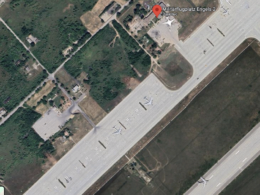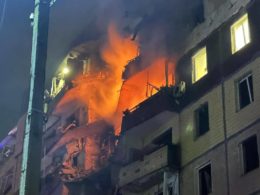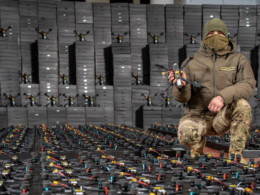Recent Russian advances through Pokrovsk represent the culmination of a 21-month campaign to seize the town, according to military analysis. The progress has been enabled by a five-month battlefield air interdiction effort specifically designed to degrade Ukrainian defensive capabilities.
Russian forces are now sending nearly 100 fireteams—consisting of up to three personnel each—into Pokrovsk daily, a Ukrainian drone unit operating in the area reported. The unit stated that these Russian fireteams are overwhelming Ukrainian positions to the point where drone operators lack sufficient time to launch their equipment.
"Russian infiltration groups are deliberately targeting Ukrainian drone crews to engage them in close combat, inhibiting Ukrainian drone operations," Ukrainian military sources recently reported.
The Russian advance from Avdiivka to Pokrovsk covered 39 kilometers—just over 24 miles—over 21 months. Russian forces captured Avdiivka in February 2024 and immediately began the Pokrovsk campaign, initially attempting to take the town through direct frontal assaults in March 2024. When this approach failed, they shifted to an envelopment campaign in Fall 2024, according to Ukrainian military observer Kostyantyn Mashovets.
Mashovets reported that the Russian military command established a new three-phased infiltration process: preparation, execution, and exploitation. In the preparation phase, the command prioritizes identifying Ukrainian ground lines of communication supporting forward positions, drone operator positions and launch sites, and other exploitable areas. Spetsnaz forces conduct initial infiltration missions and surprise attacks during this phase, followed by standard assault forces in the execution phase. During exploitation, Russian forces deploy numerous small assault groups for further infiltrations and position consolidation, "likely hoping to overwhelm Ukrainian forces while sustaining heavy casualties," Mashovets added.
Successful Ukrainian drone operations largely stymied Russian advances in the Pokrovsk direction from late 2024 into summer 2025. The shift came in July 2025, when Russian forces began achieving battlefield air interdiction effects against Ukrainian ground lines of communication, effectively denying Ukrainian forces the ability to use Pokrovsk as a logistics hub.
Russian technical innovations enabled these effects. First-person view drones with increased ranges, thermobaric warheads, and "sleeper" or "waiter" drones deployed along ground lines of communication allowed Russian forces to restrict Ukrainian troop movements, evacuations, and logistics. Russia also deployed elite drone operators from the Rubikon Center for Advanced Unmanned Technologies to the Pokrovsk direction and other priority sectors in Donetsk Oblast, focusing on interdicting Ukrainian logistics routes and eliminating Ukrainian drone operators.
Mashovets said on 4 November that Russia created the Rubikon Center specifically to target and strike Ukrainian drone crews, noting that Russian forces prioritize Ukrainian drone crews in tactical, operational, and strategic-level strikes.
Russian forces achieved a limited penetration northeast of Pokrovsk in the Dobropillya tactical direction in August 2025, likely exploiting a porous frontline while seeking to secure the eastern flank of the Pokrovsk direction.





